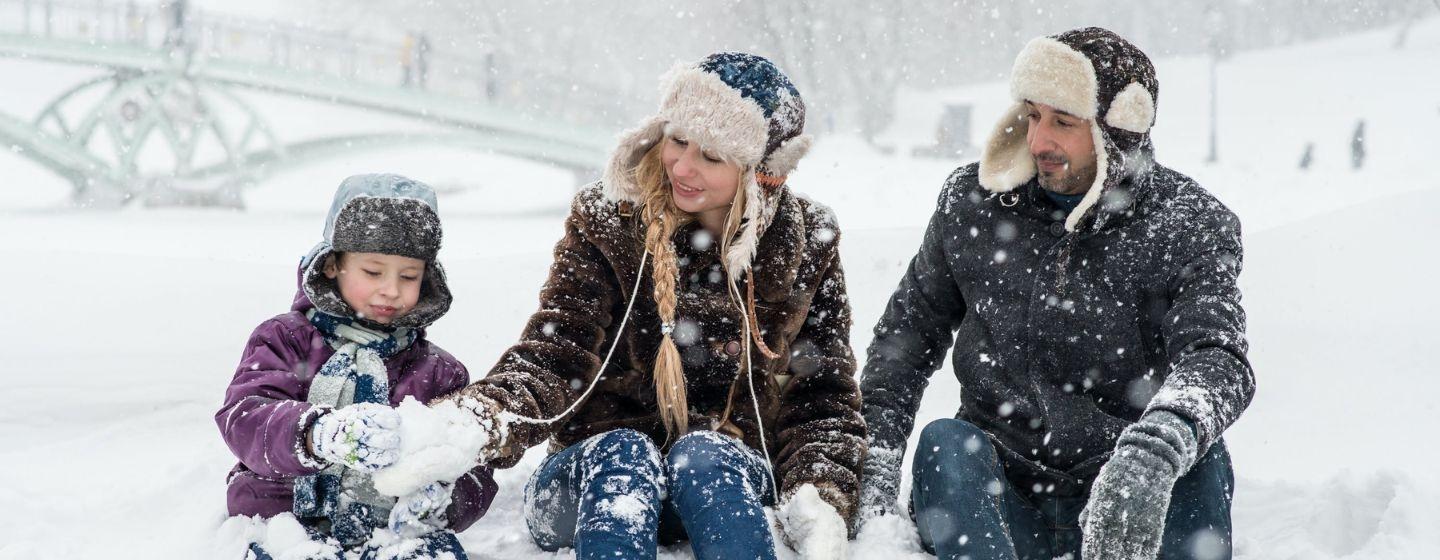The Science of Staying Warm in Winter


Even if the chance of snow is remote in most parts of North Carolina, the temperature is dropping. And that means it’s time for the daily self-quiz in front of the closet: “What should I wear to stay warm?”
Your first thought of grabbing the heaviest coat might be fine for a quick run outside to grab the mail or walk the dog. However, if you talk with people who spend a lot of time outdoors, from hikers and skiers to construction workers, you’ll learn that wearing layers of clothes is the way to go.
Science backs them up.
“Keeping warm when it’s cold outside is really just basic physics,” said Emiel DenHartog, Ph.D., professor of clothing biophysics, personal protection and textile testing at the Wilson College of Textiles at NC State. “The key is understanding how to balance the heat exchange between our bodies and the cold air outside.”
But before we talk about the best way to stay warm, we must first talk about acclimatization. It’s a big word, but it basically means you get used to whatever the temperature is over a period. That’s why when the temperature first rises or falls dramatically, it feels colder or warmer than it really is. The new temperature is a shock because your body is acclimated to the previous temperature.
The good news is that you can adjust what your body is acclimated to. DenHartog believes it takes exposure to hot or cold temperatures a couple of hours a day over a period of ten days to get acclimated to either a hot or cold environment.
“Once you get acclimated to the new normal, cold in the winter and hot in the summer, you can talk about creating a balance,” explains DenHartog. “During the summer, there is only so much you can do besides wearing clothes designed for warm weather and drinking water so you can perspire, but to stay warm during the winter, you need to create layers of warm air about the body.”
A heavy coat creates roughly a half-inch layer of warm air. That will keep you warm. But once you start moving around, the layer of warm air becomes jostled and uneven. That means the warm layer of air isn’t providing very good insulation because those parts of the body where the layer is thin will get cold.
In addition, the body generates heat as it moves. And if there is too much activity, the body will start to get too warm, which is why you often see a person in a heavy coat opening it to cool down.
That’s why layering is important.
DenHartog suggests the layer closest to your skin should trap warm air against your body. Almost any type of clothing will do that, but the important thing to remember is that you want the fabric to be a wicking type of fabric. That’s especially true if you’re going to be doing any kind of physical activity; otherwise sweat will be trapped against your skin.
“Our body’s built-in cooling system is to sweat when we get too warm, and when the sweat evaporates the body is cooled down,” said DenHartog. “But if you’re in a cold environment, you may lose too much heat through evaporation, and you may not be able to warm yourself fast enough.”
High-tech, athletic T-shirts are a good choice. Wool is also a better insulator and thermoregulator because of its wicking nature. The wool fibers form tiny air pockets that trap heat. T-shirts made of cotton are not recommended because they retain moisture.
Since you’ve already taken care of sweat and evaporation, the mid-layer is all about warmth. A fleece or a soft-shell jacket is a good choice because the goal is to build layers of warm air.
“This is where each person needs to adjust what they are wearing depending on their level of activity and what makes them feel comfortable,” added DenHartog.
Finally, the outer layer. The main job here is to protect you from the elements, so grab a coat that is windproof and rainproof.
And to top it all off (pun intended), wear a hat!
It’s not true we lose more heat through our heads than through our bodies, but there’s still heat loss.
One last point: don’t forget gloves. Why? It’s not because there is tremendous heat lost through the fingers, but because there is limited circulation, your fingers will get cold and uncomfortable.
Now that you’re ready, bring on the cold weather!
North Carolina Weekend destinations around the state perfect for a winter weekend including The Horse Shoe Farm in Henderson County, a tour of Harkers Island, hiking on the Green River Trail, photography on the Blue Ridge Parkway, and a visit to a new wine shop in Chapel Hill.
Watch NC Weekend online & on the free PBS App.